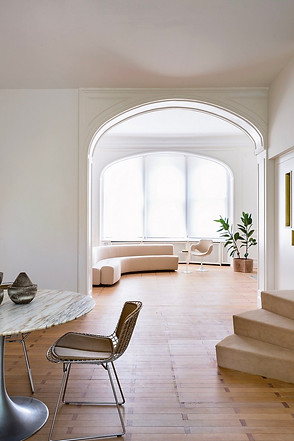

IN THE HANDS of Raphaël Van Gend, almost anything is possible. At 43, the Belgian-born designer has been a ballet dancer (he trained at Academy Saussin); a painter (he studied at the Brussels Royal Academy of Fine Arts); and a fashion model in New York City in the mid-90s. In 2000, Van Gend returned to Europe and opened a creative agency in Paris, representing photographers like Matthieu Salvaing and fashion designers such as Charles Anastase. On the side, he studied the spiritual philosophy of Jiddu Krishnamurti and produced electronic music albums. ‘‘I’m always searching, that’s my way. It’s very touche-à-tout,’’ which, Van Gend explains, is French for ‘‘someone who dabbles.’’ ‘‘I work intuitively but that means I don’t always know where I’m headed.’’


Three years ago, he changed course once again, stepping back from his agency, Bureau Central, and starting anew. This fall, Objet Singulier — Van Gend’s line of sculptural lacquer jewelry — will debut at Le Bon Marché in Paris and at Matches Fashion in London. The collection of brass and wood lariat necklaces and cuffs, glossed in shades of shell pink, evergreen and Mediterranean blue, represent a ‘‘reflection of nature’s primeval beauty,’’ says Van Gend, who was inspired by the architecture of the natural world: the sheer edge of a cliff, the slickness of wet rocks. He manufactures his designs in a small village near Saigon in an old-fashioned workshop that employs 200 of the country’s top artisans. There, they apply 18 layers of lacquer to a single piece of jewelry, which takes an average of two months to complete. Van Gend says he is among the first in contemporary design to use this laborious technique — usually reserved for trays, bowls and other traditional handicrafts. ‘‘I like to align opposites,’’ he says. ‘‘The goal and challenge in my work has always been to make different ideas exist harmoniously.’’

The jewelry designer Raphaël Van Gend took on the gut renovation, construction and decoration of a six-story 1920s townhouse in Brussels to create a quiet retreat with negative space. The living room is an exercise in restraint, with a few carefully selected pieces, including a shell-colored Pierre Paulin sofa.
THIS TENSION — BETWEEN old and new, rough and smooth — is the aesthetic ethos Van Gend brought to his six-story townhouse in the quiet, tree-lined Brugmann area of Brussels. The 600-square-meter structure was in terrible condition when Van Gend bought it a year and a half ago. He tore through decades of neglect, removing all but a few details: delicate plaster cornices, dramatic guillotine windows and an original marble fireplace the shade of mint-chip ice cream — one of the few shots of color in the whitewashed space.
During the renovation, Van Gend played the role of both architect and interior designer. He modified the poured concrete stairwells, hand-sanding the hard-edged corners to achieve an organic softness. In the entryway, the lower half of the walls are paneled with slabs of foggy Carrara marble, while the upper half are painted with a custom shade of white Van Gend flecked with almost indecipherable traces of blue and red, which he says gives the room a subtle freshness and warmth.
Despite an intense attention to detail, the 1920s house is uncluttered to the point of emptiness. ‘‘To me, an absence of things is peaceful,’’ Van Gend says. With a deft sense of composition, he arranged almost cinematic vignettes with a scarce amount of furniture chosen from a variety of periods: geometric brass sconces by the postwar Belgian designer Jules Wabbes, a square, patinated steel chair by the contemporary designer Franck Robichez and a creamy, undulating sofa by Pierre Paulin, originally manufactured in the late ’60s. When he couldn’t find an armchair to complement the sofa, he designed a swiveling leather captain’s chair upholstered in Kvadrat fabric. He also re-envisioned the room’s intricate floor, polishing the interlocking grid of tiles custom-cut from solid chips of oak into a pale finish.
One of the house’s most arresting spaces is Van Gend’s studio on the ground floor, which opens onto a small, verdant garden — an abundant contrast to the serenity within. Here, the floor is coated in polyurethane tinged in muted cloudy green — similar to the marble of the fireplace — which took Van Gend five attempts to achieve. The centerpiece of the studio is a black drafting desk by Ben Storms, a contemporary Belgian designer, made from a wafer-thin slice of foam topped with a 4-millimeter layer of inky marble.